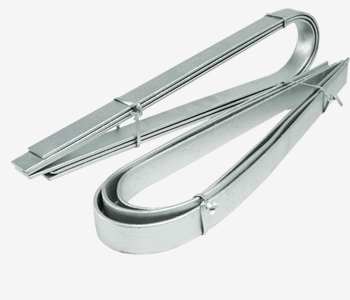Earthing is a critical aspect of electrical safety and system reliability. Earthing strips, specifically flat earthing strips, play a pivotal role in providing a low-resistance path for fault currents to dissipate safely into the ground. These flat strips are essential components of electrical systems in various industries, ensuring the protection of personnel, equipment, and structures from electrical faults. In this article, we'll explore the significance of flat earthing strips, their features, and the diverse applications they serve.
Earthing Strip Flats
- Home
- Earthing Strip Flats
We are Manufacturer, Supplier, Exporter of Earthing Strip Flats from Pune, Maharashtra, India.
Introduction Of Earthing Strip Flats

Earthing Strip Flats
Features and Benefits Of Earthing Strip Flats
- Electrical Safety : Flat earthing strips help maintain a safe electrical environment by dissipating fault currents into the ground, preventing electrical shocks and minimizing the risk of fires caused by electrical faults.
- Equipment Protection : By effectively grounding electrical systems, flat earthing strips protect sensitive equipment and devices from damage due to voltage surges and transient events.
- Durability : Made from high-quality materials, such as copper or aluminum, flat earthing strips are resistant to corrosion and weathering, ensuring long-term reliability.
- Ease of Installation : These strips are designed for straightforward installation, reducing labor costs and project timelines.
- Customization : Different sizes and lengths of flat earthing strips are available to accommodate specific project requirements, ensuring a tailored grounding solution.
Applications Of Earthing Strip Flats
- Industrial Facilities : Manufacturing plants, chemical refineries, and power generation facilities rely on flat earthing strips to provide a safe path for fault currents, protecting both equipment and personnel.
- Commercial Buildings : Flat earthing strips are essential in commercial spaces to ensure the safety and reliability of electrical systems, supporting lighting, HVAC systems, and office equipment.
- Telecommunications : Telecommunication infrastructure, such as cell towers and data centers, uses flat earthing strips to safeguard sensitive electronic equipment and maintain uninterrupted service.
- Renewable Energy : Solar farms and wind energy installations employ flat earthing strips to ground photovoltaic arrays and wind turbine structures, reducing the risk of lightning-related damage.
- Transportation Infrastructure : Airports, railway networks, and transportation hubs utilize flat earthing strips to protect electrical systems from damage and ensure passenger safety.
Conclusion
- Flat earthing strips are the silent protectors of electrical systems, ensuring safety, reliability, and compliance with industry standards. They play a pivotal role in grounding electrical equipment and structures, minimizing the risk of electrical hazards and equipment damage. Whether you're working on an industrial project, a commercial building, or a renewable energy installation, flat earthing strips are a crucial component in ensuring the safety and reliability of your electrical systems.

